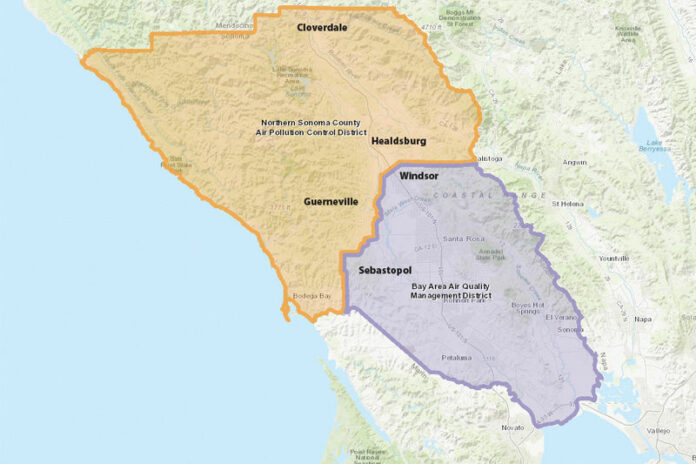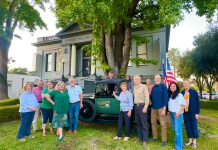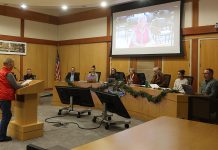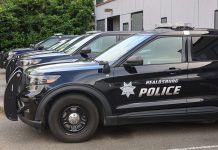Two districts in Sonoma County, each with its own board and rules
Air quality is a year round concern, but its during the winter that most concerns — and misconceptions — about rules relating to air quality crop up. As recent social media discussions demonstrate, the understanding of air quality districts, their functions and rules, is often lacking and can lead to confusion.
In Sonoma County, a large piece of the confusion is due to the fact that depending on where you live, you will fall under one of two air quality districts, each with its own vastly different rules.
If you live in the town limits of Windsor, Sebastopol, Graton, Valley Ford or points south you are part of the massive Bay Area Air Quality Management District. The BAAQMD was founded in 1955 as a way to control open burning at dumps and wrecking yards. This massive district covers most of the greater bay area and has significant rules and regulations, along with a robust monitoring program. If you’ve ever heard the term “Spare the Air,” those rules were created by, and only apply to, the BAAQMD.
However, if you are in Annapolis, Bodega Bay, Bodega, Camp Meeker, Cazadero, Cloverdale, Duncans Mills, Forestville, Geyserville, Guerneville, Healdsburg, Jenner, Monte Rio, Rio Nido, Sea Ranch or the unincorporated areas of Windsor on the north end of town, then you fall under the auspices of the Northern Sonoma County Air Pollution Control District.
As urbanization began in inexorable crawl in the 60s and 70s, so too the BAAQMD spread to additional counties. But in the early 1970s the denizens of Sonoma County put a stop to its march northward, by creating their own district along the boundaries of old Spanish land grants, according to Alex Sasthin of the NSCAPCD.
“You can see old lot lines left from when the Spanish allocated those in 1800 and that’s what they followed when they allocated districts,” he said. “It doesn’t follow roads or geographic features.”
There are 35 air quality districts in the state, and though each is largely autonomous, they share similar structures, including a board of directors, a hearing board and an air pollution control officer. Their authority comes from the state and federal government, so they are not bound by city or county laws. However, the boards are comprised of local politicians. For example, NSCAPCD’s board of directors includes county supervisors James Gore and Lynda Hopkins, and city and town council members Leah Gold (Healdsburg), Sam Salmon (Windsor) and Melanie Bagby (Cloverdale).
All districts must meet the same air quality standards, but because of the largely rural character of most of the north end of Sonoma County, the need for the more restrictive rules found in the BAAQMD is simply not necessary, according to Rob Bamford, the air pollution control officer for NSCAPCD.
“The Bay Area has a lot more air quality impacts — industrial ports, high density, lots of people and cars — just a lot more impacts on their air pollution,” Bamford said. “You look at Healdsburg versus a port in San Francisco, you see what I mean. So, they have to be proactive and have programs like Spare The Air and other advisories to meet the standards. We are rural, we have cleaner air quality and less restrictions, but at end of day all of us must meet the state and federal standards of their program. Since we have less impacts, we can have less restrictions and still meet the standards, and that’s how the state intended it to be.”
As a result, while NSCAPCD does control open burns (by requiring permits and restricting them on certain days) they do not restrict the use of woodstoves nor do they use Spare The Air days, both tools of the BAAQMD.
But, that doesn’t mean the two districts are completely far apart, especially when it comes to wintertime restrictions, thanks to a little something called the stable boundary layer. According to the Lawrence Hall of Science, during still, cold winter nights with clear skies, the air closer to the ground can be cooler, thus heavier than the air above. The difference in temperature creates a physical boundary known as the stable boundary layer.
When a stable boundary layer exists, smoke from wood burning doesn’t mix into the atmosphere and remains close to the ground. This results in increased concentrations of particulate matter.
“If it’s a Spare The Air day it’s a bad day to burn, so it’s a No Burn day,” said Sasthin. “Bad meteorology for woodstoves is bad meteorology for open burns. Very cold and very still are bad burn days. When there are storms like last year, we have almost no No Burn days.”
“The idea that (BAAQMD) is more aggressive or has better air, is not a very grounded in policy,” said Bamford. “Both districts measure air quality and do what they can to meet the standards. We have some of the cleanest air, monitored by the state and the feds. When their monitors show elevated values that are deemed unhealthy they call Spare The Air, but in our case our numbers rarely get in the same areas. Because we’ve got things that work for us, we don’t have to restrict wood burning to meet standards, whereas they might have to do that. So, it does confuse people.”
Both organizations would like to see less woodstove burning and thus have programs to help homeowners move to more environmentally friendly technology.
NSCAPD has the “3-2-1 Burn Clean” program which “provides qualifying applicants a rebate to replace a non EPA-certified wood heating appliance with a new EPA-certified wood or pellet stove, or gas insert, or electric heat pump. Under this program, the old, non-certified appliance must be destroyed. The program includes supplemental assistance for qualifying Russian River area and low income households.”
BAAQMD has a similar program called “Fireplace Changeout,” though their program does not allow for replacement by wood heating appliances, only gas or electric. There are extra incentives for residences where the woodstove is the only source of heat or if it is located in a “designated high wood smoke area.”
Want to see which district you or your neighbors fall into? Check out the interactive map at www.nosocoair.net. You can type in your address and see immediately where the district lines fall. You can also see what the rules are for your particular district and what incentive programs may be available, be it NSCAPD at the above address or the BAAQMD at www.baaqmd.gov.









